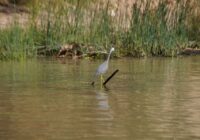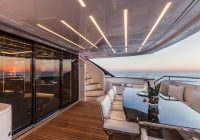By Rebecca Whitlocke, Founder of Antibes Yachting
Last month, I went to the UN Ocean Conference (9 June – 13 June 2025) with my youngest son to engage with ocean literacy projects and learn more about the people and policies fighting for stronger ocean protection.
My son and I loved La Baleine (The Whale), an incredible, immersive exhibition hall split into 15 pavilions covering everything from coral reefs to polar research to biodiversity. The zone was buzzing with lots of educational and interactive exhibits and talks. UNESCO and other organisations showcased their efforts to roll out new tools and educational lessons for educators, schools and media.
At the “Beyond Borders: Ocean Futures” pavilion, the SEA BEYOND Ideas Box came to Nice – an educational program by Prada Group and UNESCO-IOC created by Bibliothèques Sans Frontières. The Ideas Box is a mobile multimedia centre that works to enable access to information and cultural resources for children and young people. The initiative is kitted out with books, games, tablets, VR headsets, and educational content focused on ocean knowledge and sustainability.
The project talked about the SEA BEYOND Ocean Literacy Centre that opened in Venice and their partnership with Coral Gardeners. Daily at the UNESCO pavilion, kids could design their own artwork and discover marine creatures through a VR experience. For this activity, SEA BEYOND collaborated with the fantastic Satellite Crayon Project by SKY Perfect JSAT, showcasing its “Crayons of the Sea” range. The colours in the crayon set are original shades created to accurately reproduce the colours of the world’s oceans as seen from space, and therefore, none of the colours have names. Instead, the crayons only list the latitude and longitude of the locations from which the colours were derived – how cool is that! 🖍️
Another example that aims to build ocean literacy and youth engagement was “Ocean Heroes”, a new educational game developed by UNESCO-IOC, Minecraft Education, and the Voice of the Ocean Foundation. Through immersive gameplay, kids take on virtual marine missions tackling real-world issues like coral reef loss and plastic pollution.
As a parent, I want my kids to know their actions matter. As a business owner in yachting, I want to stay informed and involved. Progress isn’t perfect, but it’s happening and it’s no longer sitting in the shadows waiting for someone else to start doing something about it.
I had a lot to say about our time at UNOC3, and 3000 words still didn’t cover it….
This is what I found.
The third United Nations Ocean Conference (UNOC3), co-organised by France and Costa Rica, was held in Nice from 9 to 13 June 2025. It aimed to support the implementation of Sustainable Development Goal 14 (SDG14): to “conserve and sustainably use the oceans, seas and marine resources for sustainable development.”
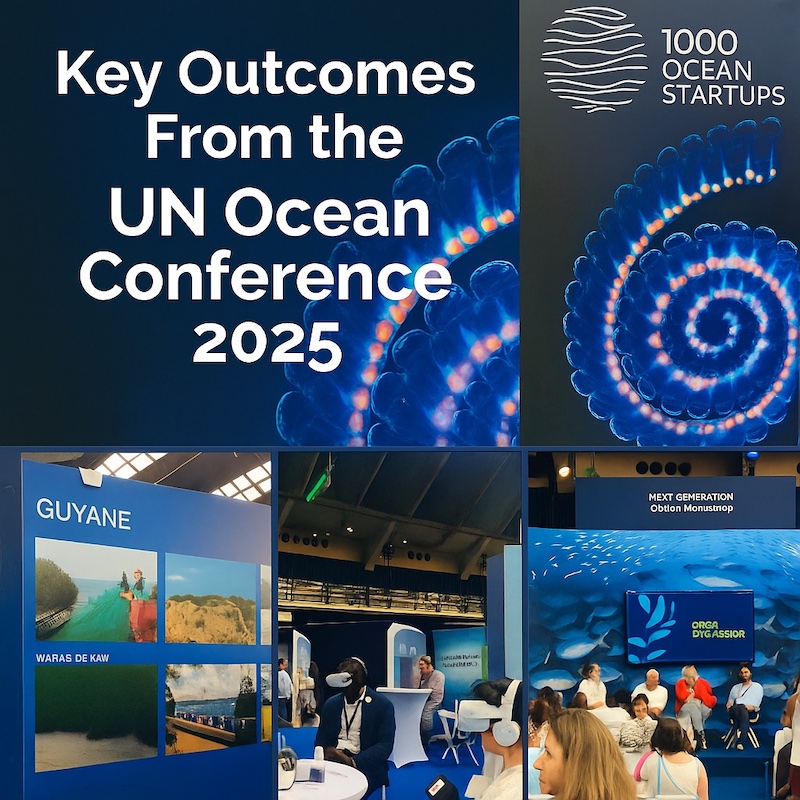
The conference’s outcome, known as the Nice Ocean Action Plan, is a two-part framework made up of a political declaration and over 800 voluntary commitments by governments, scientists, UN agencies, and civil society since the second UN Ocean Conference in Lisbon in 2022.
The 2025 UN Ocean Conference focused on three main priorities:
- Priority 1: Completing multilateral processes linked to the ocean
- Priority 2: Mobilising finance for SDG14 and supporting a sustainable blue economy
- Priority 3: Improving access to marine science to enhance policy-making
With seminars, roundtables and over 450 side events, the conference welcomed around 15,000 delegates from more than 120 countries, including 2,000 scientists, 60 world leaders, 190 ministers and 100,000 visitors. Rising sea levels, bottom trawling, marine protected areas, blue economy investment, maritime transport, ocean science, and plastic pollution – these issues are no longer distant warnings.
The United States, whose recent push to fast-track deep-sea mining in international waters sparked global backlash, was noticeably absent with official represenation. France’s special envoy, Olivier Poivre d’Arvor, stated: “One country may be missing. But 92% of the ‘co-owners’ were present today in Nice.”
I went to UNOC3 with my youngest son to engage with ocean literacy projects and learn more about the people, groups, and policies fighting for stronger ocean protection.
Stronger Support for the High Seas Treaty
One of the biggest outcomes: the High Seas Treaty, also known as the BBNJ agreement, moved closer to enforcement. Nineteen countries ratified the treaty during UNOC3, bringing the total to 50. Just 10 more are needed for it to come into force. It will become legally binding 120 days after the 60th ratification is submitted to the UN.
Countries depositing their ratifications during UNOC3: Albania, Bahamas, Belgium, Croatia, Denmark, Fiji, Ivory Coast, Greece, Guinea-Bissau, Indonesia, Jamaica, Jordan, Liberia, Malta, Mauritania, Solomon Islands, Tuvalu, Vanuatu, Vietnam
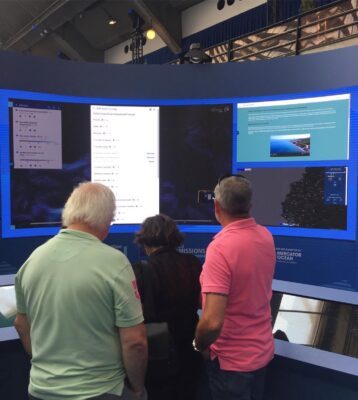
UN Ocean Conference 2025, Nice
Countries that signed the High Seas Treaty during UNOC3: Andorra, Armenia, Burundi, Cambodia, Equatorial Guinea, Guinea, Guinea Bissau, Jordan, Lebanon, Lesotho, Montenegro, Niue, North Macedonia, Papua New Guinea, Peru, Senegal, Serbia, South Africa, Saint Kitts and Nevis, Yemen.
This long-awaited pact aims to protect marine life in two-thirds of the ocean that fall beyond national jurisdiction.
Several countries committed to ratifying the treaty by September, which means it could come into effect as soon as January 2026.
15 Takeaways from the UN Ocean Conference
-
More Countries Confirmed High Seas Treaty Support
There was great progress toward enforcement with more nations ratifying and signing the pact during UNOC3.
-
More Funding for Coral Reefs
A coalition of government and philanthropic partners pledged over US$25 million in new contributions to the Global Fund for Coral Reefs (GFCR). Coral reefs are vital to biodiversity, coastal protection, and the communities that depend on them.
-
New MPA Support Group Launched
The “Friends of Marine Protected Areas” was launched – a new political initiative dedicated to boosting global momentum toward protecting at least 30% of the ocean by 2030. This group of like-minded Ocean Champions, currently comprising Australia, Chile, Costa Rica, France, Greece, Senegal, and Seychelles will track progress and keep pressure on leaders.
-
Over 20 New Marine Protected Areas (MPAs) Announced
A study by National Geographic Pristine Seas and Dynamic Planet found that in order to meet the global target of 30×30, 85 new marine protected areas would need to be created daily.
French Polynesia announced the largest marine protected area in the world. It will cover 5 million square kilometres, the nation’s entire exclusive economic zone (EEZ) and will restrict activities such as bottom trawling and deep-sea mining. One-fifth will be designated a highly or fully protected area, where only traditional Tahitian boats, ecotourism and scientific exploration are allowed.
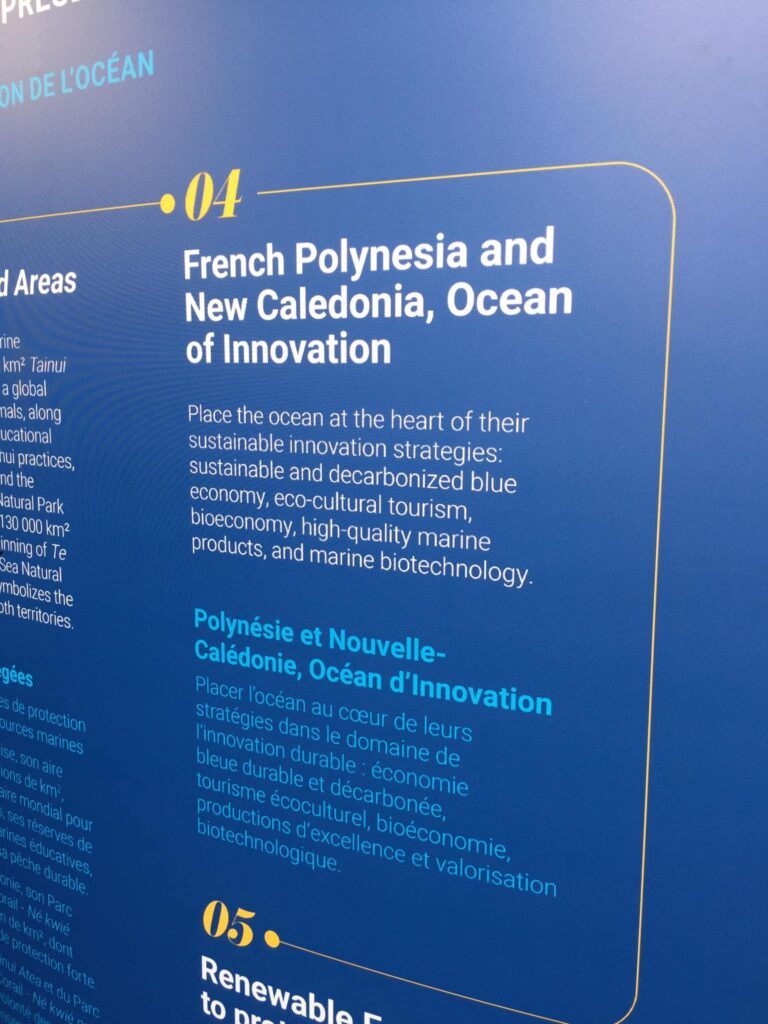
Pacific nations came out in force with strong voices at UN Ocean Conference 2025
Other MPA zones announced during UNOC3 included Greece, Samoa declaring nine new marine parks, Spain, and South America.
-
Mixed Messages on Bottom Trawling
Mixed outcomes for this : French NGOs said France’s stance lacked substance, while the UK pledged to ban bottom trawling in 41 MPAs, covering 30,000 square kilometres.
-
Ocean Literacy in Focus
My son and I loved La Baleine (The Whale), an incredible, immersive exhibition hall split into 15 pavilions covering everything from coral reefs to polar research to biodiversity. The zone was buzzing with lots of educational and interactive exhibits and talks. UNESCO and other organisations showcased their efforts to roll out new tools and educational lessons for educators, schools and media.
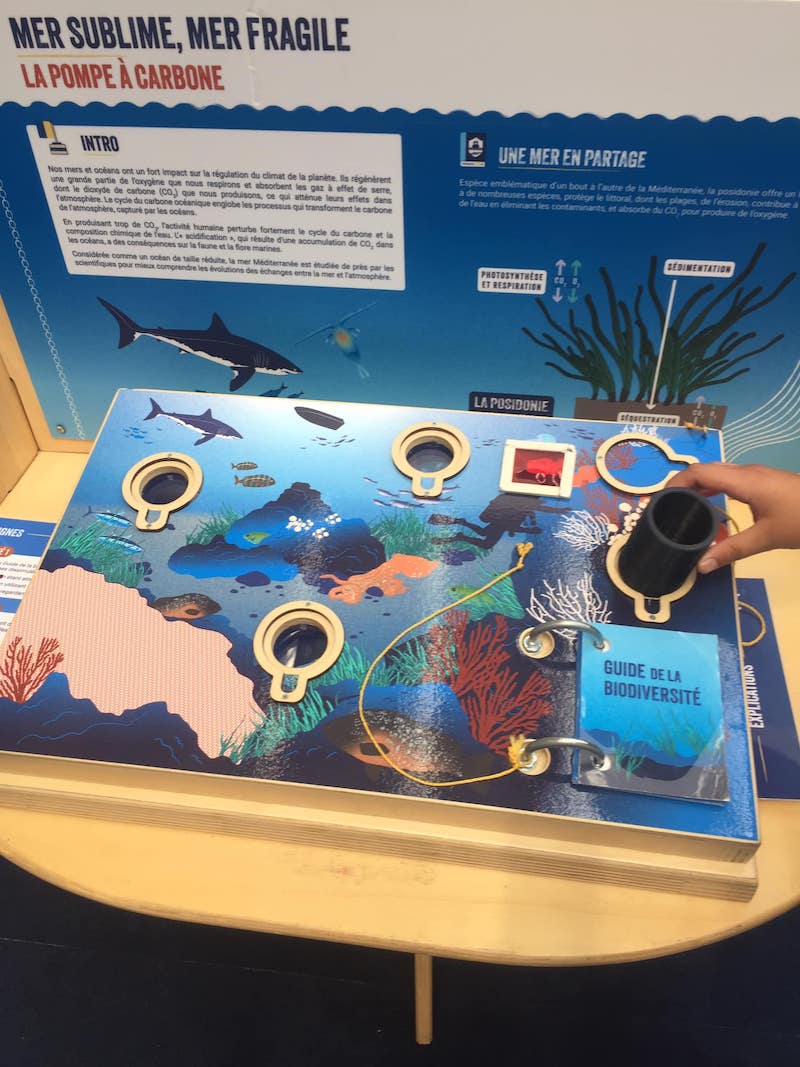
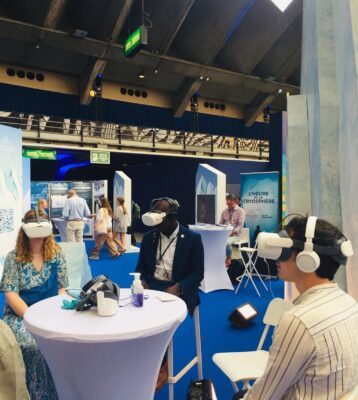
Lots of interactive and educational workshops and activities at the 2025 UN Ocean Conference.
At the “Beyond Borders: Ocean Futures” pavilion, the SEA BEYOND Ideas Box came to Nice – an educational program by Prada Group and UNESCO-IOC created by Bibliothèques Sans Frontières.
The Ideas Box is a mobile multimedia centre that works to enable access to information and cultural resources for children and young people in vulnerable communities.
The initiative is equipped with books, games, tablets, VR headsets, and educational content focused on ocean knowledge and sustainability.
The project talked about the SEA BEYOND Ocean Literacy Centre that opened in Venice and their partnership with Coral Gardeners. Daily at the UNESCO pavilion, kids could design their own artwork and discover marine creatures through a VR experience. For this activity, SEA BEYOND collaborated with the fantastic Satellite Crayon Project by SKY Perfect JSAT, showcasing its “Crayons of the Sea” range. The colours in the crayon set are original shades created to accurately reproduce the colours of the world’s oceans as seen from space, and therefore, none of the colours have names. Instead, the crayons only list the latitude and longitude of the locations from which the colours were derived – how cool is that!
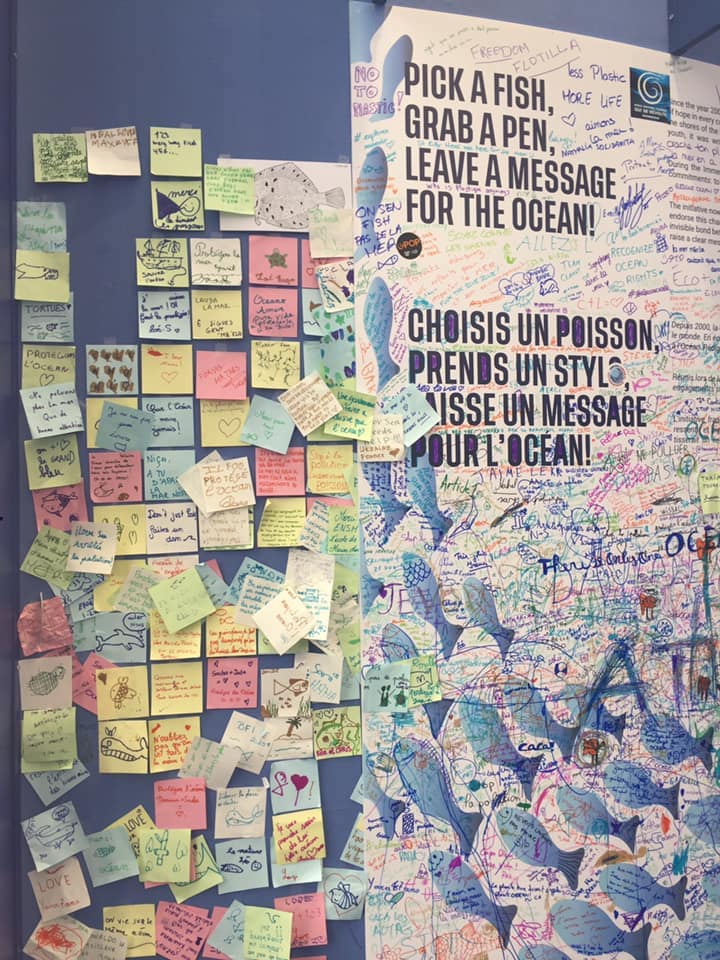
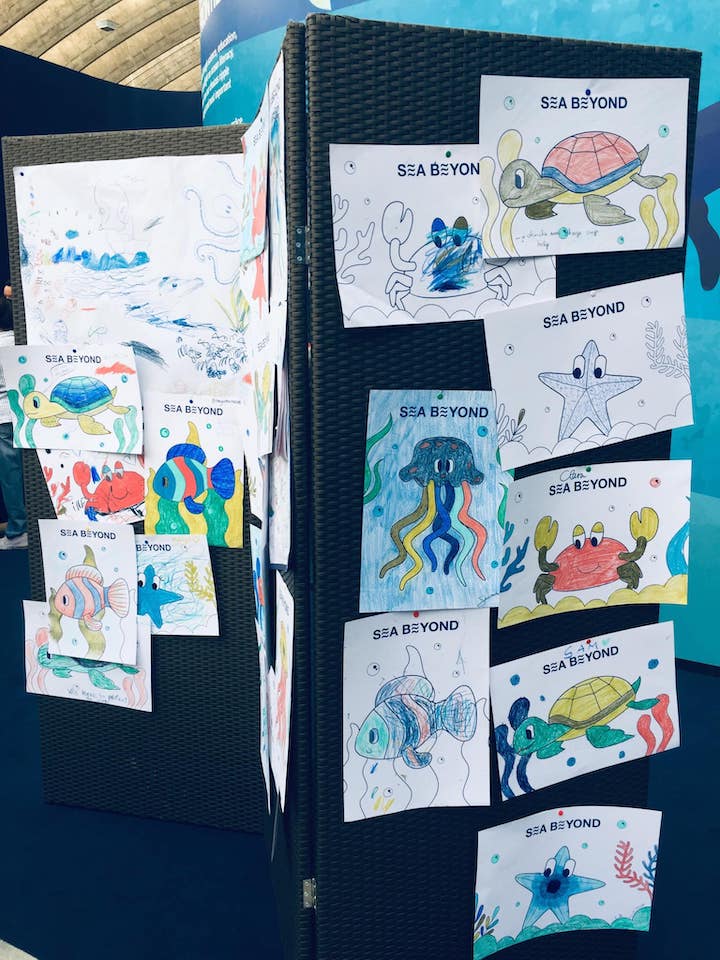
Another example was “Ocean Heroes”, a new educational game developed by UNESCO-IOC, Minecraft Education, and the Voice of the Ocean Foundation. Through immersive gameplay, players take on virtual marine missions tackling real-world issues like coral reef loss and plastic pollution. The game’s objectives are to build ocean literacy, critical thinking, and youth engagement.
-
Shipping Sector Engaged
Stakeholders urged more action on control and management of biofouling, discharges such as grey water and vessel design. Thirty seven countries joined the “High Ambition Coalition for a Quiet Ocean” during UNOC3, signalling growing recognition of the need to address underwater radiated noise (URN).
Lloyds’ Register released its “Shipping Biodiversity Report” during UNOC3 recommending a number of practical strategies and solutions for greener shipping. The International Maritime Organization (IMO) highlighted the work being done in the maritime sector to combat marine litter, protect biodiversity from invasive aquatic species introduced by ships, tackle underwater noise pollution and decarbonise the maritime sector.
-
Funding the Blue Economy
EU Commission President Ursula Von der Leyen announced €1 billion for 50 global ocean projects, with a third allocated to science and research. The fund aims to boost conservation, sustainable fisheries, and knowledge-sharing. Spain announced an €8.5 million contribution to a Mediterranean blue economy fund to support sustainable marine development.
-
Plastics Treaty Accelerated
More than 90 ministers issued a symbolic statement in Nice reaffirming their support for tighter deadlines for the strongest possible plastics treaty, to be rediscussed in August.

A global Treaty against plastic pollution was a key topic at UNOC3
-
Sustainable Fisheries Management on the Agenda
Numerous panels focused on fisheries that are integral to the global food system and play a crucial role in poverty alleviation and economic development. Coastal communities discussed long-term sustainability, including biodiversity loss, climate change, overfishing, harmful subsidies, illegal, unreported, and unregulated (IUU) fishing, and marine pollution.
-
Science & Big Tech took the Spotlight
Marine tech, scientific research and startups drew interest, especially those showcasing better data tracking and tools to help ocean health. From reef scans to data tracking, ocean-related cooperation and tech innovation was everywhere.
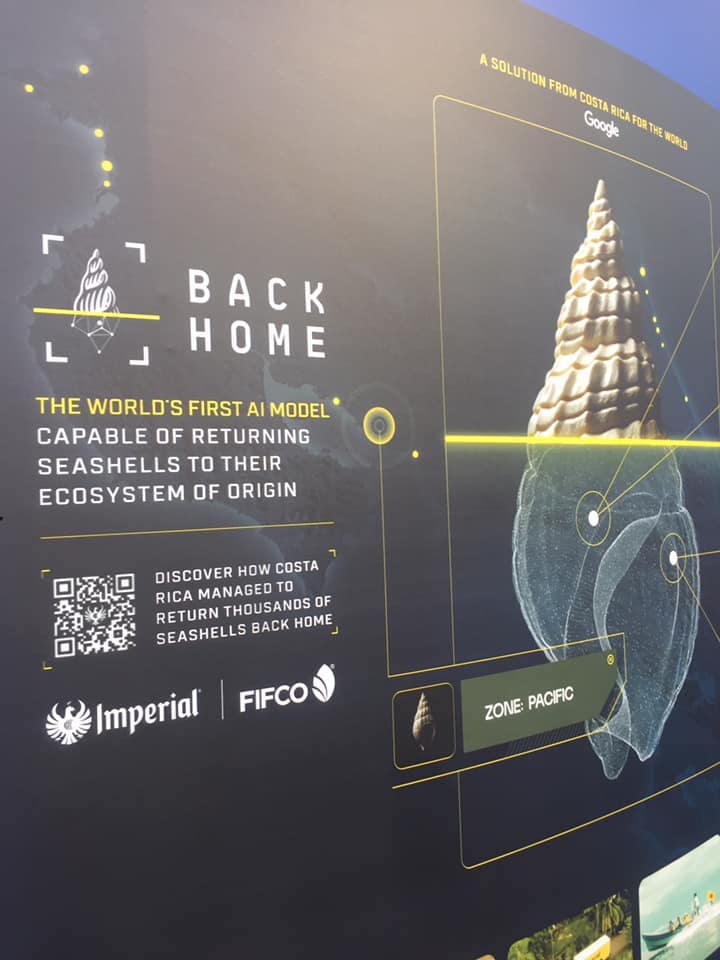
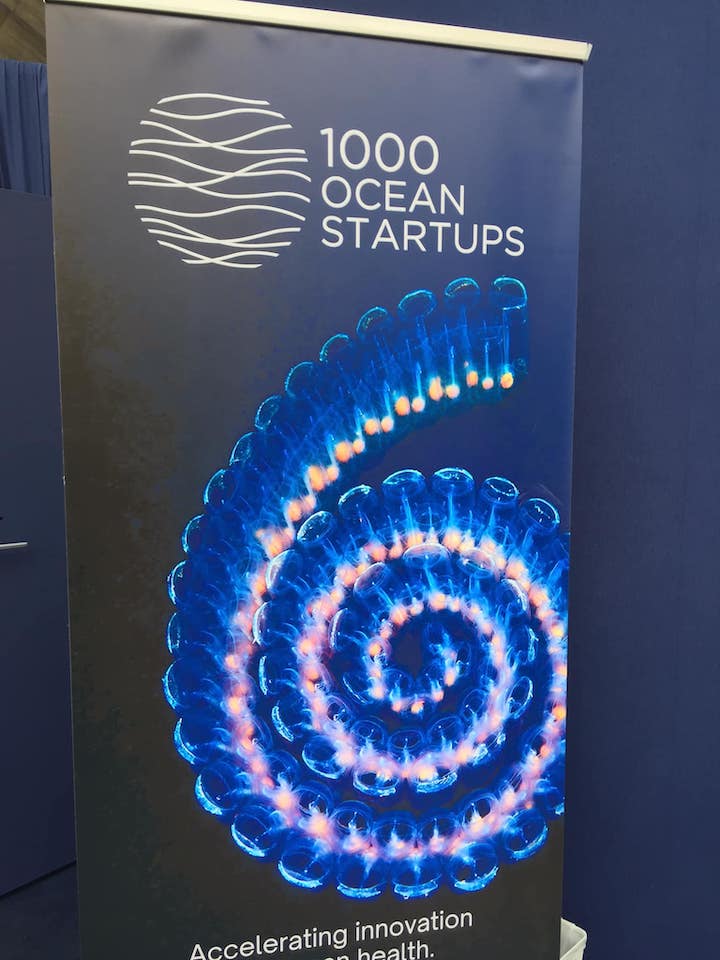
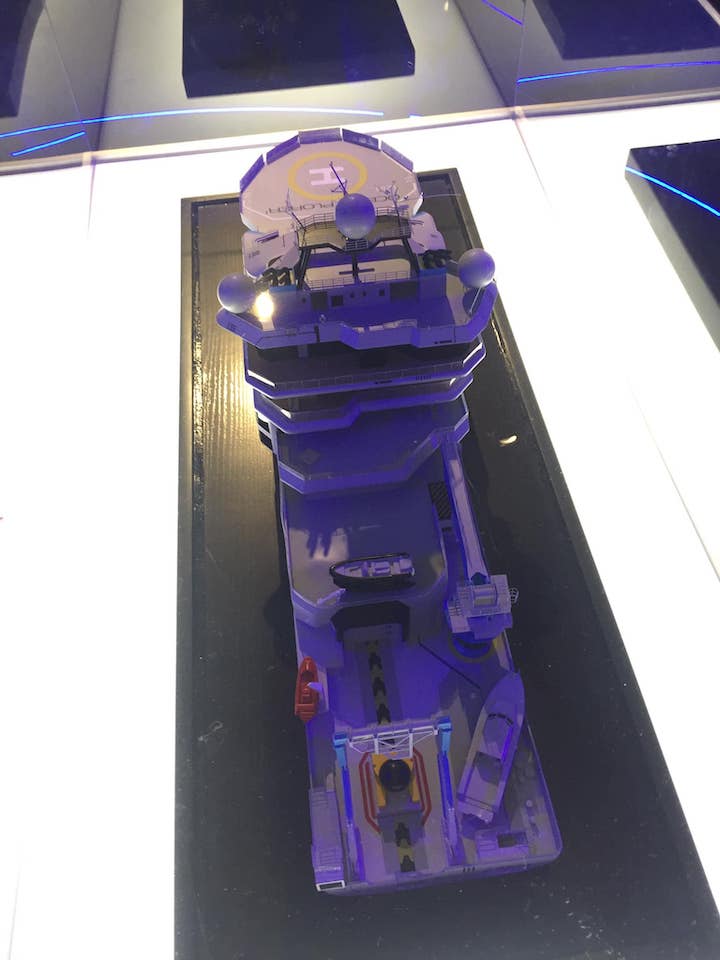
Two examples are the launch of eDNA Expeditions Phase II supported by Minderoo Foundation. This OBIS-powered global campaign unites citizens, educators and scientists to monitor marine life in MPAs globally using environmental DNA (eDNA). The next example I learned about is FIFCO’s AI tool that classifies seashells by photographs. Moving seashells from their habitat can disrupt biodiversity, alter sediment stability and introduce non-native organisms to global seas. The AI tool was trained using over 18,000 photos of 500+ species, enabling the project to differentiate shells in the Pacific and Caribbean. Last year, over 36,000 seashells were returned to their natural habitats.
-
Wastewater and Ports Addressed
New working groups launched to curb sewage outflows and waste in and near marinas. In France, on the Basque coast, in St Malo in Brittany and Marseille on the Mediterranean coast, SUEZ shared how they create water quality trend forecasts, which are produced using predictive models to anticipate health risks. They’ve also installed ten artificial rock structures in Toulon and planted clusters of cystoseira algae, endemic to the Mediterranean, in partnership with the Ifremer research institute, to boost fauna and flora in the harbour. This Cystore® ecological engineering solution has been deployed by SUEZ in Marseille, Monaco and Port Vauban in Antibes.
-
Youth Perspectives Tied to UNOC3
Stronger youth voices brought urgency to civic responsibility, ocean literacy and marine protection pledges. Nausicaá who launched the “Citizen of the Ocean” coalition in spring 2024 were represented, as were ambassadors for Blue Citizenship.
The “Coalition of Emerging Ocean Leaders (CEOL)” formed; an alliance of youth and early-career professionals working at the forefront of ocean innovation, science, policy, and civil society. The Sustainable Ocean Alliance partnered with OceanXplorer to welcome 50+ young ocean leaders onboard for a tour from the bridge to the dive centre, followed by programming led by the SOA team that focused on youth empowerment and community.
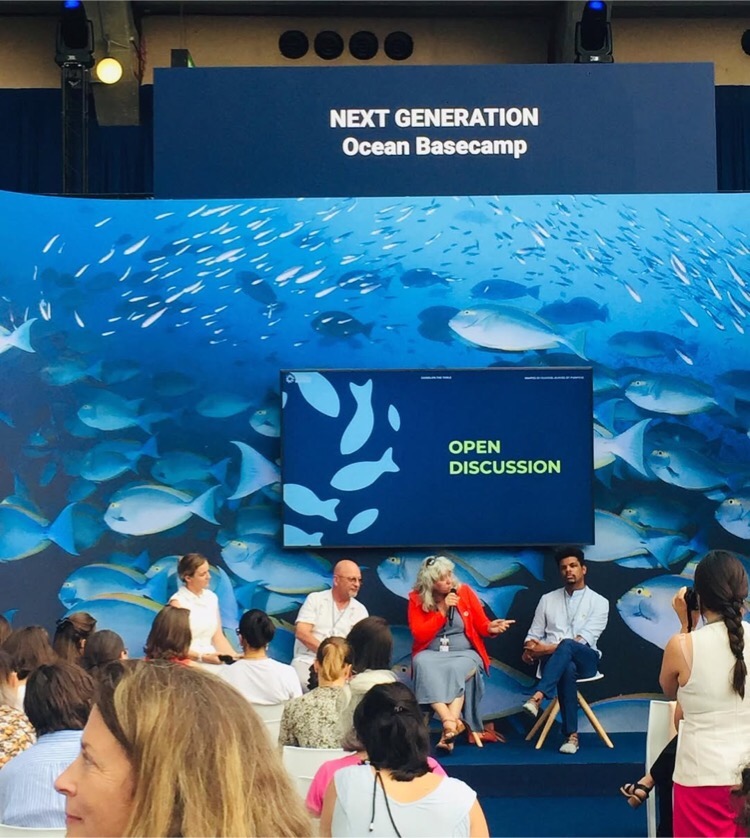
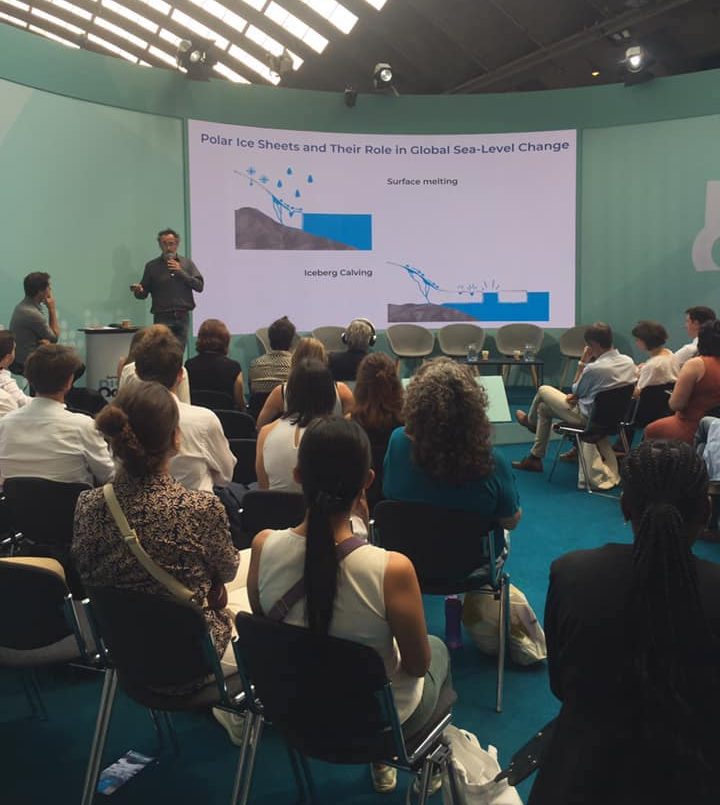
-
One Ocean Finance Fund Proposed
Economic and financial aspects came into play. A top proposal was the consolidation of international financing into a single global ocean funding mechanism (One Ocean Finance), as well as ongoing development of financial investment such as blue bonds and blue carbon credits.
It aims to complement existing funds, and gained support from Small Island Developing States for its objectives to develop and fund a blue economy that promotes job equality and social inclusion, particularly for women, youth, and traditional communities.
-
Pledge for a Deep-Sea Mining Moratorium
The conference saw four new countries – now 37 – joining France in calling for a moratorium, pause or ban on deep-sea mining.
Who Stepped Up at the 2025 UN Ocean Conference
NGOs were out in force, tracking outcomes in real time, not waiting for post-event PR spin. Social media was well and truly buzzing with updates and news all week!
Island nations, Indigenous peoples and local communities played a vital role, sharing traditional knowledge and pushing for action. New Zealand pledged $52 million for ocean governance in the Pacific.
Small Island Developing States (SIDS) from the Caribbean and Pacific demanded more financing, climate-resilient infrastructure, and a transition away from fossil fuels. Jeremiah Manele, Prime Minister of Solomon Islands, emphasised that investment to support small-scale fisheries and ensure climate-resilient infrastructure “is not aid but investment in global food security and ocean health.”
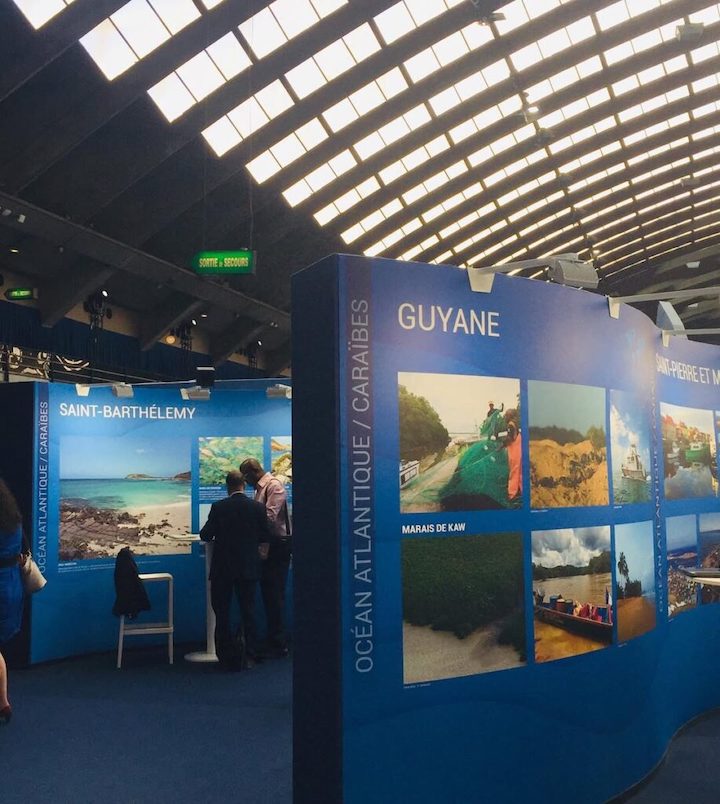
Small Island Developing States (SIDS) at the UN Ocean Conference 2025
GFCR and UNCDF announced a US$1 million portfolio guarantee facility to support reef-positive enterprises in Papua New Guinea. Structured in partnership with Women’s Micro Bank and UNDP, the facility will unlock over PGK 5.7 million in loans for sustainable, women-led micro, small and medium enterprises (MSME) that strengthen reef and community resilience.
Just prior to UNOC, the Blue Economy and Finance Forum was held on 7 and 8 June 2025. Co-organised by the Principality of Monaco, the Monaco Oceanographic Institute, and the Prince Albert II of Monaco Foundation, the forum aimed to identify and mobilise solutions to support blue economy initiatives and preserve marine ecosystems. After two days of negotiations, €8.7 billion in new financial commitments were secured, with €4.7 billion from private investors and philanthropists, and €4 billion from public financial institutions. These funds are expected to contribute directly to the implementation of the Global Biodiversity Framework and the BBNJ agreement.
What Didn’t Happen at the UN Ocean Conference 2025
Let’s not sugar-coat it. Some discussions and topics fell short and some were just downright baffling.
The High Seas Treaty still lacks enforcement teeth.
France fell short with only 4% of metropolitan waters protected from bottom trawling, and no clear timelines.
Costa Rica, one of the UNOC3 co-hosts, stayed quiet on its controversial fisheries expansion policy where the list of commercially fished marine species leaps from 34 to 234, which included wild species. The document authorised the exploitation and trade of corals, turtles, wild iguanas, sea urchins, sponges, sea cucumbers and algae among many others. Costa Rica has an exclusive economic zone (EEZ) of over 530 thousand square kilometres, approximately ten times larger than its continental territory. Marine habitats in Costa Rica are home to an estimated 3.5% of the world’s marine biodiversity. Fisheries and aquaculture account for a relatively small share of Costa Rica’s economy. However, fisheries remain important to some coastal communities that have limited alternative sources of income. The vast majority of fisheries activity occurs on the Pacific coast and is concentrated in the Puntarenas province. However, there’s still no legal requirement for science-based decision-making in Costa Rica’s fisheries management and policies. This means monitoring and regulations differ across species and locations – for example, tuna are more comprehensively monitored than for sea bass or sharks. For a nation that has prioritised protection of The Cocos Island National Park Marine Protected Area and The Bicentennial Marine Management Area to safeguard migratory routes of marine species, I find it disappointing that there’s insufficient systemic data collection for better monitoring and control of their fisheries.
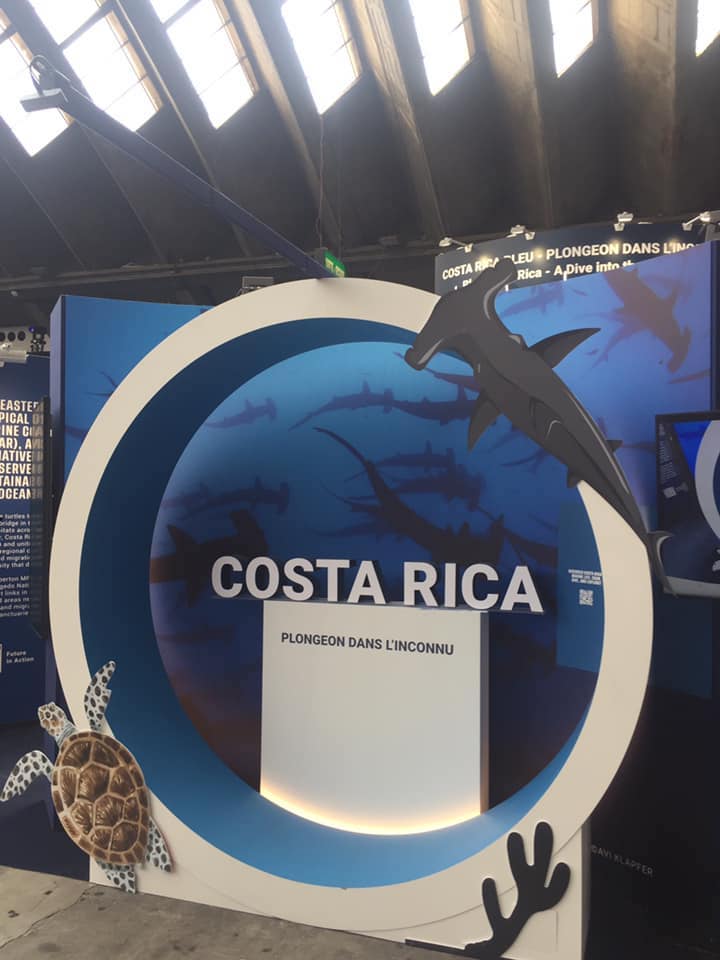
While there was support for a plastics treaty that reinforces recycling and less consumption, there were no clear deadlines to actually reduce plastic production.
Marine species like seagrass, whales, and krill that are vital for ecosystem regulation and acting as a carbon sink weren’t central to governance talks.
Discussions at UNOC3 about precautions around marine geoengineering were off the table, despite growing public outcry. Late last year at the UN Convention on Biological Diversity, governments came together and reaffirmed the de factor moratorium – their commitment to a precautionary approach to geoengineering. Geoengineering experiments are greatly driven by the private sector with commercial purposes and attempt to manipulate Earth’s systems in response to climate change. One highly publicised case was SCoPEx in Sweden a few years ago, who called off a flight for Stratospheric Aerosol Injection (SAI). Their open-air experiment involved using a high-altitude balloon that would release pollutants into the stratosphere and then measure the impact on the atmosphere’s chemistry and how sunlight passes through it. Some marine geoengineering projects already shut down include magnesium hydroxide being dumped in the sea in St Ives in Cornwall, UK to test ocean alkalinity, companies profiteering from selling carbon credits through biomass sinking projects, and the Arctic Ice Project. I really was not aware of so many damaging geoengineering projects happening to our oceans, so UNOC3 opened my eyes about this!
Why It Matters to Yachting
You don’t need to run a research vessel to see the connection to yachting. Every yacht charter, every anchorage, every tender ride impacts ocean health. What happens at UNOC3 echoes on a wider scale within our industry impacting brokers, crew, charter companies, marinas, shipyards and more.
- MPAs can change our cruising routes.
- Shipping laws can shape the boats we build and material specs.
- Port laws can impact what we discharge and the need for better waste management.
This isn’t someone else’s issue. It’s ours and it’s relevant because clients care. Crew care. Builders care. We all interact with the same oceans. Ocean health and preservation revolve around a complex intersection of social, economic and environmental factors: climate, finance, food, livelihoods, marine preservation and coastal communities.
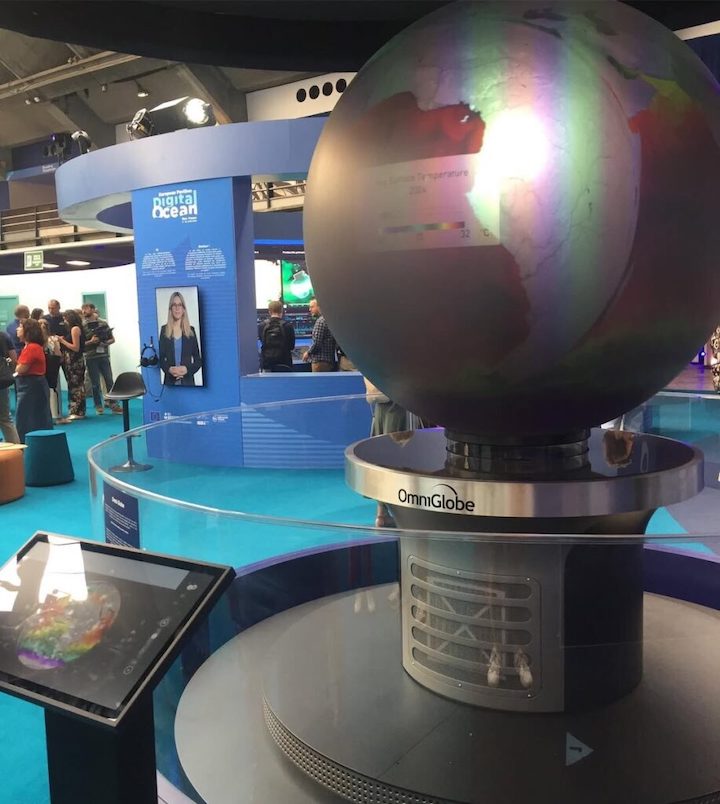
UN Ocean Conference 2025
As a parent, I want my kids to know their actions matter. As someone in yachting, I want to stay informed and involved. Progress isn’t perfect, but it’s happening and it’s no longer sitting in the shadows waiting for someone else to start doing something about it.
At the closing plenary, it was announced that the fourth UN Ocean Conference (UNOC 4) will take place in 2028, co-hosted by Chile and the Republic of Korea.
All photos: Antibes Yachting / This blog is my personal opinion and any source links published in this specific blog article are purely for informative purposes with no affiliation, endorsement or commercial partnership intended.
Rebecca has numerous sources in researching and preparing this opinion piece.
For a full list of those resources you can see this story on the Antibes Yachting Page HERE






